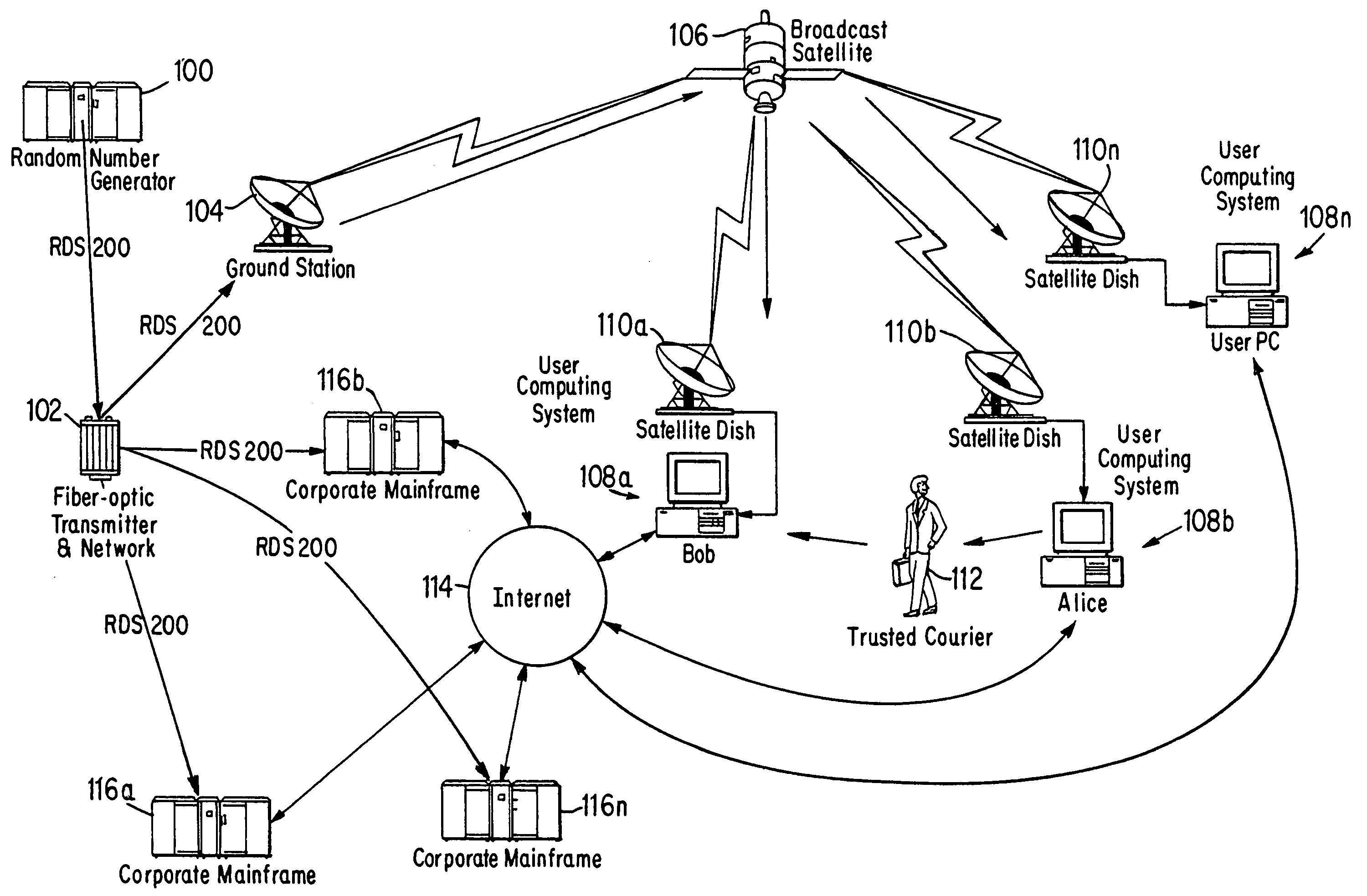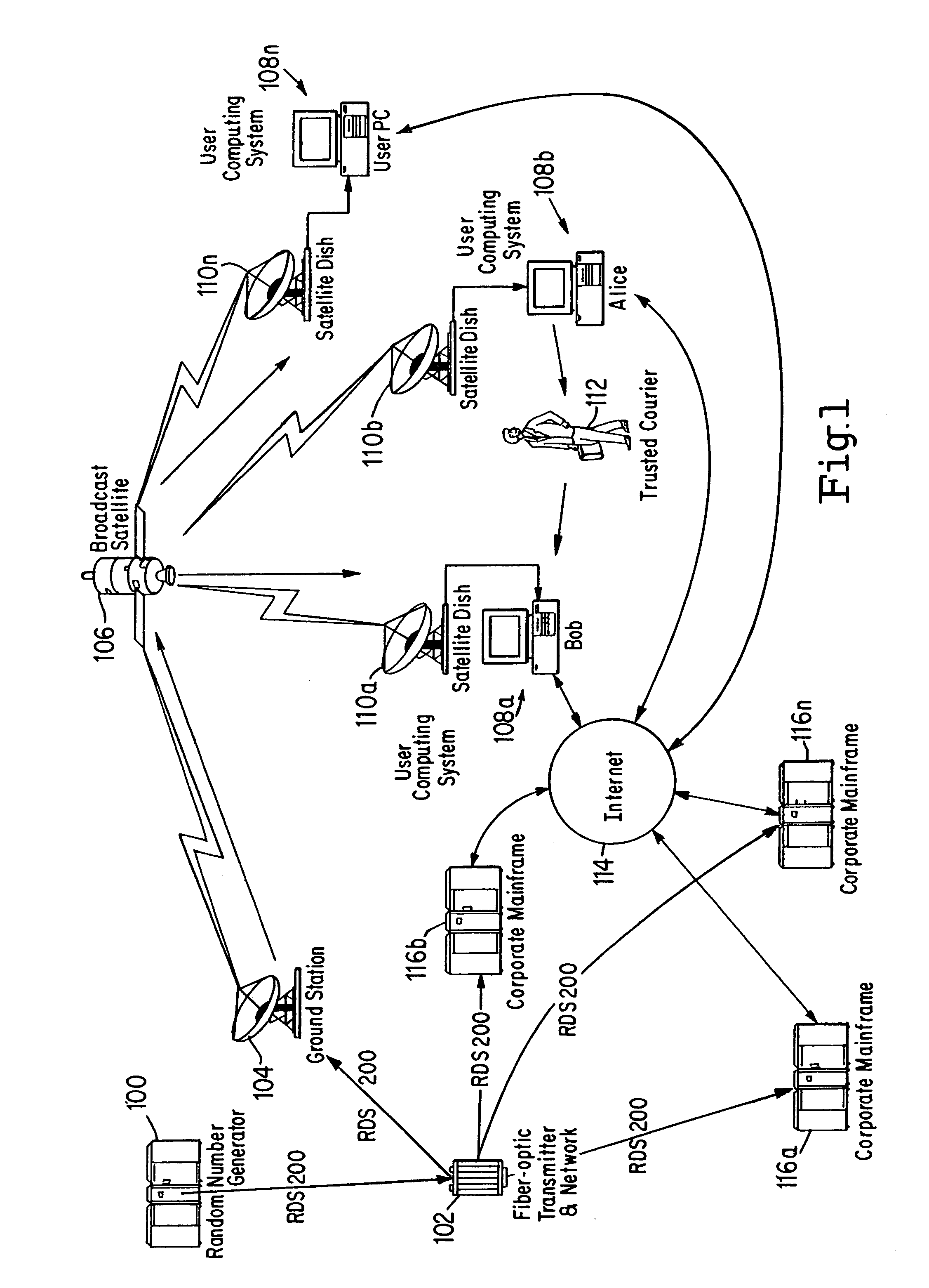Global encryption system
a global encryption and encryption technology, applied in the field of data encryption, can solve the problems of limiting the use of encryption systems, reducing the security of encryption systems, and creating real costs of encryption systems, so as to reduce or eliminate information, and increase the uncertainty
- Summary
- Abstract
- Description
- Claims
- Application Information
AI Technical Summary
Benefits of technology
Problems solved by technology
Method used
Image
Examples
first example system embodiment
[0061]Referring to FIGS. 1 and 2, a first example embodiment of a system of this invention will be described. FIG. 1 shows an example high level system architecture, with FIG. 2 showing a more detailed architecture of typical example of the FIG. 1 User Computing System 108n. FIG. 3 described is an example a general encryption method of this invention performed, for example, by the system of FIGS. 1 and 2.
[0062]As will be clearly seen by one of ordinary skill in the art upon reading the present disclosure, the particular architecture and related hardware selection and arrangement depicted by FIG. 1 is for purposes of example only and is by no means limitative. The gist and novelty of this invention does not exist in the specific selection of hardware and arrangement thereof depicted by FIG. 1. Other example system architectures, combining and / or omitting hardware shown in FIG. 1, or using substitute methods of performing functions within the system, are contemplated.
[0063]The example...
first example
METHOD OF THE INVENTION
[0092]Referring to FIGS. 1–3, an example of the present inventive method and an example system for performing the same will now be described. The block flow diagram of FIG. 3 is for purposes of describing, to one of ordinary skill, this invention and its operation. Actual implementations of this invention which are covered by the appended claims may omit one or more steps of FIG. 3, or may combine two or more method steps depicted in the figure as separate into a single step, or perform the steps in an order different from that which is depicted.
[0093]The method of the present invention, as described in reference to the example of FIG. 3, consists of three related sub-processes. The first is the local generation and maintenance at each of the First User Computer 108a and Second User Computer 108b of Random Number Reservoir RNR for encryption and decryption of data. Steps 200 through 230 depict an example embodiment of this process. FIG. 2 steps 240 through 258...
PUM
 Login to View More
Login to View More Abstract
Description
Claims
Application Information
 Login to View More
Login to View More - R&D
- Intellectual Property
- Life Sciences
- Materials
- Tech Scout
- Unparalleled Data Quality
- Higher Quality Content
- 60% Fewer Hallucinations
Browse by: Latest US Patents, China's latest patents, Technical Efficacy Thesaurus, Application Domain, Technology Topic, Popular Technical Reports.
© 2025 PatSnap. All rights reserved.Legal|Privacy policy|Modern Slavery Act Transparency Statement|Sitemap|About US| Contact US: help@patsnap.com



